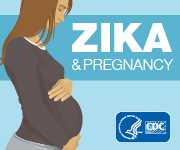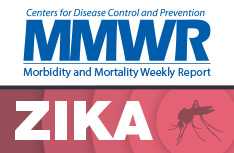Healthcare Exposure to Zika and Infection Control
On This Page
- Preventing Exposure in Healthcare Settings
- Exposures in Healthcare Settings
- Zika Testing for Healthcare Professionals
- Healthcare Professionals with Zika
- Disinfecting Patient Rooms
- Reprocessing Equipment and Devices
- Preventing Exposure in Dentistry Settings
- Advising Caretakers and Visitors of People with Zika
Preventing Exposure in Healthcare Settings
Standard Precautions should be used to protect healthcare personnel from all infectious disease transmission, including Zika virus. Standard Precautions are based on the fact that all blood, body fluids, secretions, excretions, non-intact skin, and mucous membranes might contain transmissible infectious agents. Body fluids, including blood, vaginal secretions, and semen, have been implicated in transmission of Zika virus. Current information about Zika virus transmission and risks can be found on CDC’s Zika Transmission webpage.
Healthcare personnel should use clinical judgement to determine whether a patient is well enough for an elective procedure. When performing a procedure, healthcare personnel should adhere to Standard Precautions to prevent transmission.
Labor and Delivery Settings
Healthcare personnel working in labor and delivery units should assess the likelihood of the presence of body fluids or other infectious material based on the condition of the patient, the type of anticipated contact, and the nature of the procedure or activity that is being performed, and apply practices and personal protective equipment (PPE) to prevent exposure as indicated.
Standard Precautions
Ongoing employee education and training on Standard Precautions [PDF – 226 pages], including the use of personal protective equipment, helps ensure that infection control policies and procedures are understood and followed.
Pregnant Personnel
Pregnant healthcare personnel can care for patients with Zika virus infection. However, facility managers and supervisors should exercise judgement in accommodating personnel concerned about potential exposure, which includes percutaneous exposure (needle stick or cut with a sharp object), or exposure of non-intact skin (skin that is chapped or abraded) or mucous membranes to any of the following: blood, body fluids, secretions, and excretions. Because any patient can harbor bloodborne pathogens, to prevent exposures to infectious materials, healthcare personnel should always adhere to Standard Precautions for all patients.
Exposures in Healthcare Settings
Occupational exposure that requires evaluation includes percutaneous exposure or exposure of non-intact skin or mucous membranes to any of the following: blood, body fluids, secretions, and excretions. Healthcare personnel who think an occupational exposure has occurred should report the exposure immediately to their supervisor and follow their employer’s procedures that usually involve contacting the occupational health office for an assessment of the exposure with consideration of all relevant pathogens including Zika, HIV, and hepatitis.
If wounds and skin sites have been exposed to blood or body fluids, they should be washed promptly with soap and water. Mucous membranes should be flushed with copious amounts of clean water. If it is determined that an occupational exposure did occur, testing might be indicated; however, this would need to be determined on an individual basis in conjunction with public health authorities and will depend on the type of exposure, infectious status of the source patient, and individual healthcare personnel factors including pregnancy status.
Zika Testing for Healthcare Professionals
In the absence of an occupational exposure, healthcare personnel with potential Zika exposure should be evaluated for testing following the same guidance as for the general public.
Please refer to When to Test for Zika Virus English [PDF – 1 page] | Spanish [PDF – 1 page].
Routine Zika testing is not indicated for asymptomatic healthcare personnel caring for patients with Zika virus infection. If it is determined that there has been an exposure to blood or body fluids through non-intact skin, percutaneous exposure, or splashes to mucous membranes, an individual occupational health assessment should be performed.
Healthcare Professionals with Zika
Neither work nor patient care duty restrictions are recommended for asymptomatic healthcare personnel with Zika virus infection if they adhere to Standard Precautions for every patient encounter in healthcare settings. Work decisions for symptomatic healthcare personnel should be made on a case-by-case basis and should consider the extent of the healthcare personnel’s symptoms.
Disinfecting Patient Rooms
No special cleaning or disinfection practices are required to clean rooms where patients with known or suspected Zika virus disease were treated or evaluated.
Daily cleaning and disinfection of hard, nonporous surfaces (high-touch surfaces such as bed rails and over-bed tables, housekeeping surfaces such as floors and counters) should be done. Before disinfecting a surface, cleaning should be performed. After cleaning, an EPA-registered hospital disinfectant should be used in accordance with product label instructions for the routine use of the product.
Healthcare textiles used by the patient (bed linens, towels, wash cloths) should be managed using routine practices including use of PPE as per Standard Precautions for workers handling soiled textiles and routine standards for hygienic laundry processing.
Reprocessing Equipment and Devices
No special reprocessing strategy is needed for equipment and devices used on a patient with known or suspected Zika virus disease The current general strategy of instrument/device cleaning, drying, packaging as appropriate, and sterilization or disinfection is indicated.
Equipment and devices should be reprocessed in strict adherence to the manufacturer’s instructions. FDA-cleared devices for sterilization should be used in accordance with the manufacturer’s instructions. Heat-sensitive critical and semi-critical instruments should be reprocessed using FDA-cleared sterilant/high-level disinfectants or an FDA-cleared low-temperature sterilization method according to the manufacturer’s instructions.
Preventing Exposure in Dentistry Settings
Dental professionals should follow the Guidelines for Infection Control in Dental Health-Care Settings – 2003 [PDF – 76 pages] when caring for patients, including those with known or suspected Zika virus disease. This includes strict adherence to Standard Precautions for all patient encounters, including
- Eye protection when splashes are possible
- Use of only FDA-cleared medical devices for sterilization of instruments and following the manufacturer’s instructions for correct use
- Reprocessing heat-sensitive critical and semi-critical instruments by using FDA-cleared sterilant/high-level disinfectants or an FDA-cleared low-temperature sterilization method (e.g., ethylene oxide) according to the manufacturer’s instructions
Advising Caretakers and Visitors of People with Zika
As with any other infectious illness, family members and other caregivers should take the following precautions
- Do not touch blood or body fluids and surfaces contaminated with these fluids with exposed skin.
- Wash hands with soap and water immediately after providing care to the patient. If hands are not visibly dirty, an alcohol-based hand rub can be used instead of soap and water.
- Immediately remove and wash clothes if they get blood or body fluids on them. Use laundry detergent and the water temperature specified in the garment care instructions to wash clothes soiled with blood or body fluids. Using bleach is not necessary.
- Immediately clean and disinfect surfaces that have blood or other body fluids on them, minimizing direct contact, using household detergent/disinfectant according to manufacturer’s instructions. The sick person’s immediate environment should be cleaned daily using household cleaners according to manufacturer’s instructions.
Pregnant women should follow the same precautions as other family members caring for a person with Zika, including avoiding activities that would expose them to blood or other potentially infectious body fluids.
When visiting a patient in a hospital setting, visitors should not engage in activities that could possibly expose them to blood or body fluids from a hospitalized patient. Helping a patient with sitting up in bed or walking should not expose someone to blood or body fluids; however, family members and caregivers should pay attention to hygiene, not touch blood or body fluids or surfaces soiled with them, and wash hands before and after touching the patient.
- Page last reviewed: August 29, 2017
- Page last updated: August 29, 2017
- Content source:





 ShareCompartir
ShareCompartir